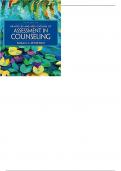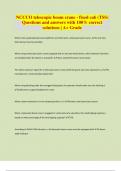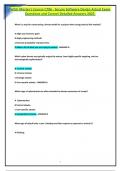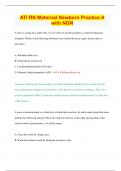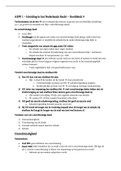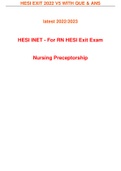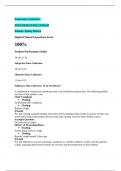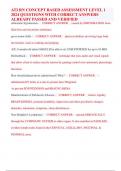Examen
Principles And Applications of Assessment in Counseling 5th Edition by Susan C. Whiston - Test Bank
- Cours
- Établissement
Multiple Choice 1. What of the following is not common within the definitions of assessment? a. Measure or using some type of measurement b. Comparing people c. Samples of behavior d. Objective or systematic measure ANSWER: b 2. When gathering information using asse...
[Montrer plus]
